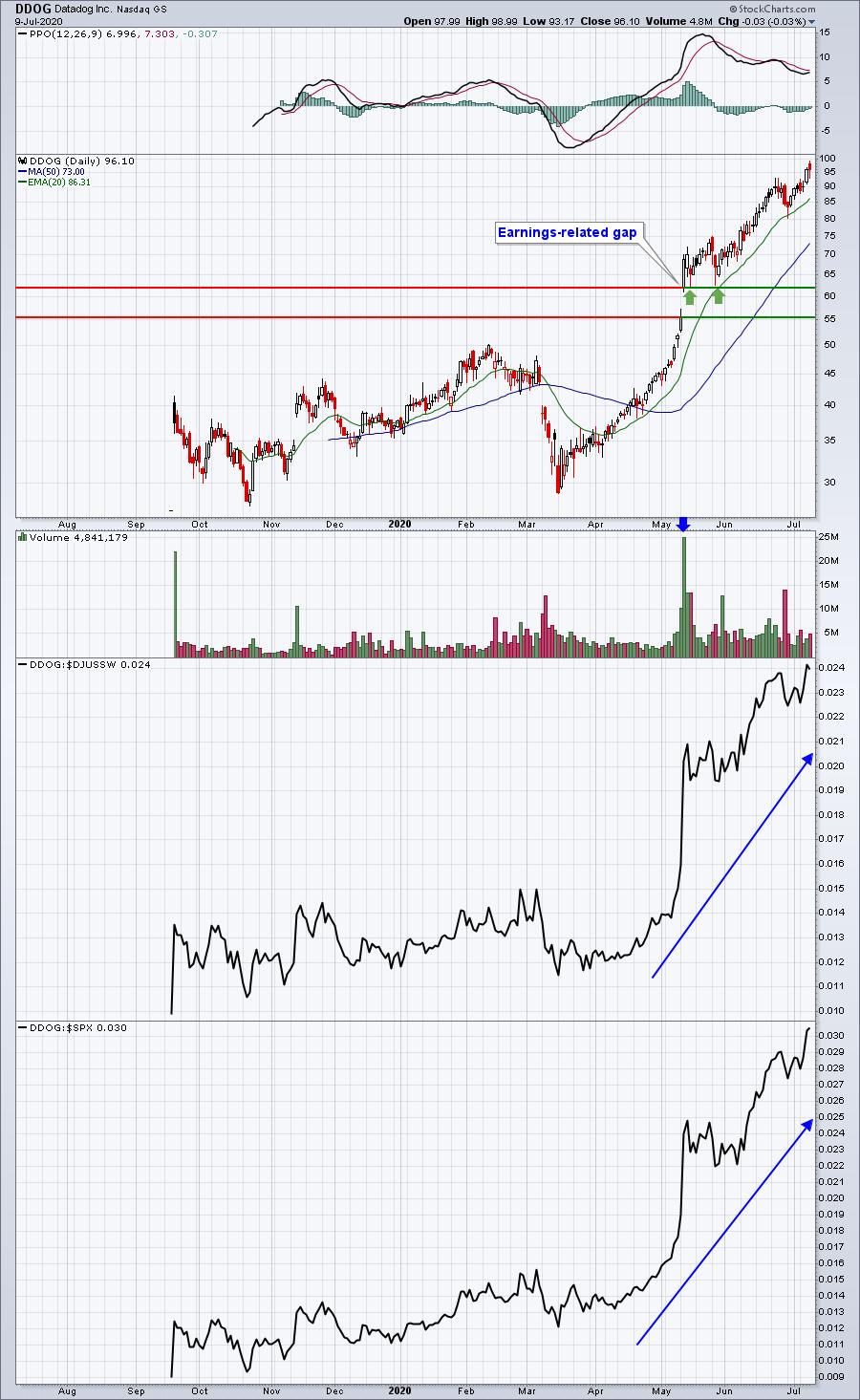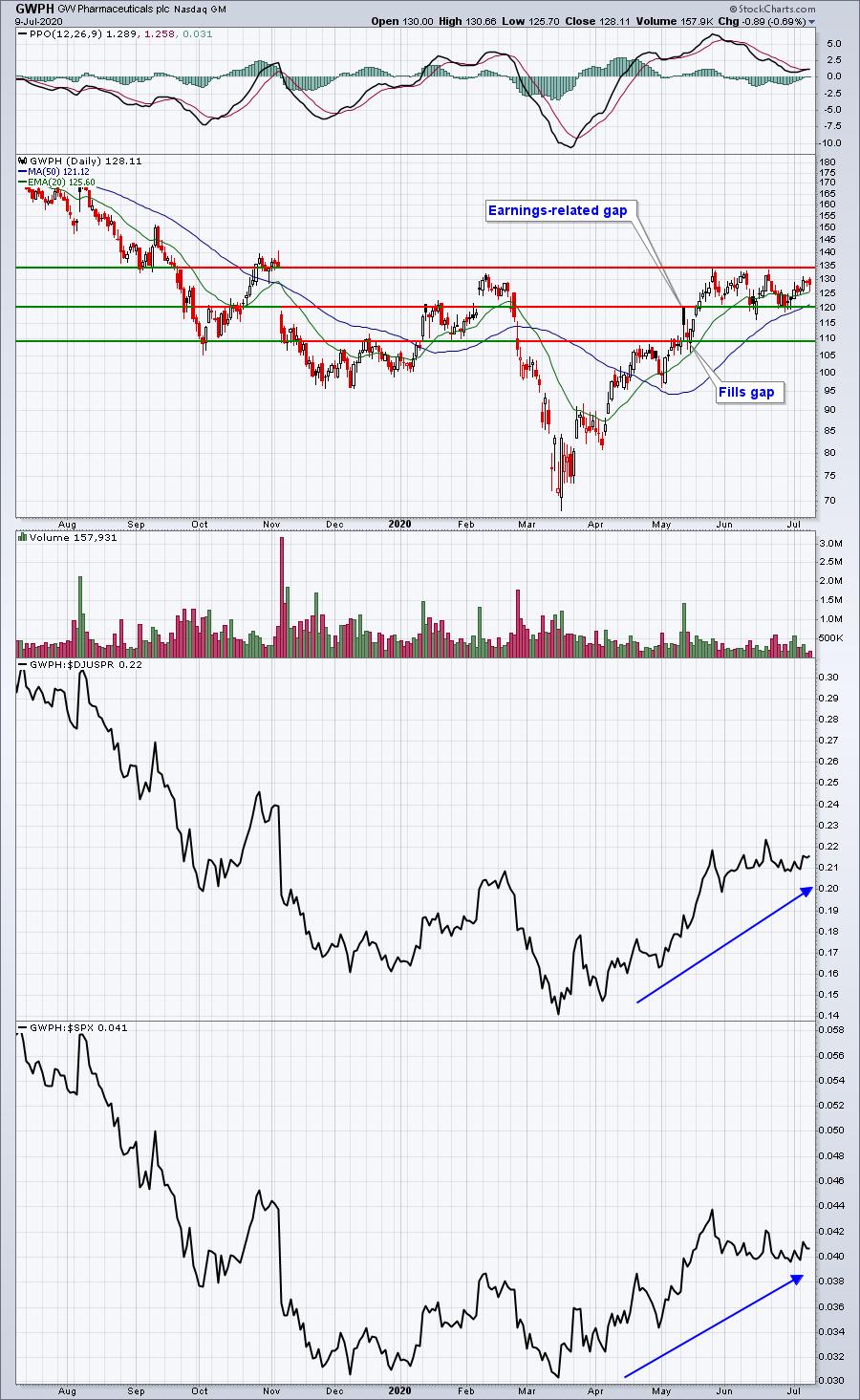This is a question directly from one of our EarningsBeats.com members and it honestly goes right to the heart of my trading strategy, so I thought it was a great question to answer and share with everyone. Because I deal so closely with earnings, gaps are a huge part of how we trade and what we trade. I absolutely love earnings season because of the opportunities it creates.
First, let me explain the types of gapping stocks that I like to trade. I like to trade earnings-related gaps because the stock market is revaluing a company based on new fundamental information. If that company beats Wall Street estimates as to revenues and EPS, is liquid (trades more than 200,000 shares daily on average), and is a solid relative performer (relative to both its peers and the benchmark S&P 500), then it become a viable trade candidate to me and it's included on our flagship Watch List, the Strong Earnings ChartList.
Gaps, however, come in different shapes and sizes. There are gaps at the open, where we see an immediate selloff after an opening gap higher, many times extremely sharp and dramatic. Then there can be gaps where the stock soars and never moves back to fill its gap (filling a gap means returning to the closing price before the new information was released and the gap occurred). I will include both of these types of gaps on our Strong Earnings ChartList, but I'll trade them completely differently.
The key for me is what the stock does AFTER the opening gap. Let me give you two different examples:
DDOG:

I love a stock like DDOG. When they blew away estimates, Wall Street had to revalue the company and they're still doing so. Keep in mind that after a blowout earnings report, EVERYONE wants to buy. So who's on the other side of those trades? Market makers are there to provide the liquidity. Normally, when market makers are shorting a stock, it tends to go down. They have tons of capital and usually bully the market to head in a certain direction short-term. This is why most gaps will fill. The two horizontal lines above mark the top and bottom of gap support. But when you see a stock like DDOG gap higher with excellent fundamental news and market makers cannot stop the bullish momentum, the TOP of gap support becomes the major support level, not the bottom of gap support. DDOG saw two subsequent tests (green arrows) of the top of gap support holding, before resuming its upward momentum. It never filled its gap.
GWPH:

GWPH reacted quite differently after its earnings report. Like DDOG, we saw a very nice gap higher. But there wasn't enough buying interest to sustain that initial move. Instead, GWPH sold off after that initial pop, and that day, along with the next two days, it traded down to its previous close, filling its gap. I would consider this reaction to be more normal than DDOG's. But when I see a stock like DDOG gap higher and continue pushing higher in the face of market maker selling, that gives us a HUGE clue about demand and accumulation. Don't overlook it.
I'm hosting a Q&A session today that will cover gaps, along with other technical analysis and philosophical questions, and how it all fits within our EarningsBeats.com trading strategies. It should be a super educational event and we'd love to have everyone join us. It will begin promptly at 11am ET (the room will likely open around 10:30am ET) and you can join us by using the following link:
https://us02web.zoom.us/j/83312812956
If you do decide to attend, and you're new to EarningsBeats.com, we'll make sure to include you as a FREE subscriber to our EarningsBeats.com Digest newsletter. It's delivered 3x a week directly to your email and will provide great examples of how we view the market and how we trade/invest.
Happy trading!
Tom






